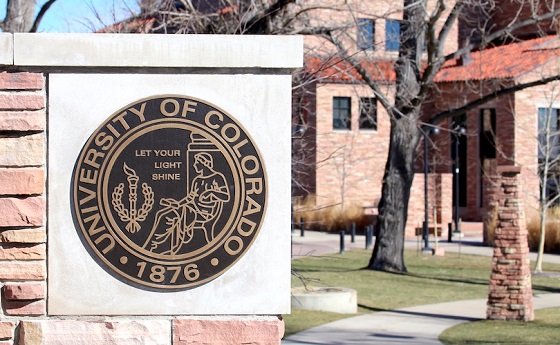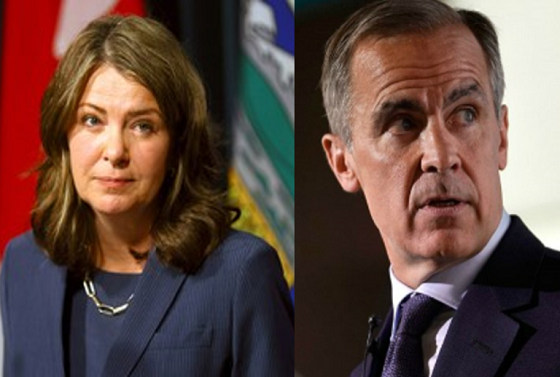Uncategorized
Here’s why young Canadians are pessimistic about the federal government

From the Fraser Institute
By Jake Fuss and Grady Munro
A new poll shows that the share of Canadians feeling pessimistic about the federal government has reached a new high. This should come as no surprise. Years of poor policy has left Canadians with a stagnant economy and declining living standards. And despite the Trudeau government’s recent focus on younger generations, young people appear the most pessimistic of all.
According to the poll conducted by Nanos, 39.8 per cent of Canadians feel “pessimism” towards the federal government—representing a seven-year high. On the flip side, 7.6 per cent feel “satisfaction,” a seven-year low.
More broadly, 68.7 per cent of respondents reported negative feelings (“anger” or “pessimism”) towards the federal government while just 16.3 per cent reported positive feelings (“optimism” or “satisfaction”). The remaining 15.0 per cent either weren’t sure or were simply disinterested.
Again, it’s not surprising that the majority of Canadians report negative feelings about Ottawa, in light of the Trudeau government’s fiscal and economic mismanagement.
For example, due to record-high spending, the Trudeau government will run its tenth-consecutive budget deficit in 2024/25 at a projected $39.8 billion. These deficits have contributed to a remarkable rise in federal government debt since Prime Minister Trudeau first took office. From 2014/15 (the Harper government’s last full year) to 2024/25, federal gross debt is expected to have approximately doubled to $2.1 trillion. And the Trudeau government has no plans to change course. Deficits are expected to continue until at least 2028/29, and projections suggest gross debt will increase an additional $400.1 billion over the same period.
What have Canadians gained from all this spending and debt?
Through the implementation of sweeping programs such as $10-a-day daycare and national dental care, the Trudeau government has expanded its role in the lives of Canadians. But because the government has chosen to use taxpayer dollars to provide services that were already offered privately, many Canadians have less choice of how to best to use their hard-earned money due to the imposition of higher taxes. Indeed, 86 per cent of middle-income families now pay more in taxes than they did in 2015, adding to the cost of living.
At the same time, Ottawa and some provinces have spent tens of billions on corporate welfare with the promise that it will promote economic growth. But over the last decade the economy has posted its worst performance since the 1930s, and Canadian living standards have been in a historic decline since mid-2019.
Finally, the burden of government debt and poor economic prospects may be why younger generations are feeling the most pessimistic. Indeed, among survey respondents aged 18 to 34, 41.3 per cent were “pessimistic” about the federal government while just 5.3 per cent were “satisfied” (the largest and smallest shares, respectively, relative to all other age groups). Despite the Trudeau government’s rhetoric about “generational fairness,” younger generations face a disproportionately higher tax burden in the future due to debt accumulated today. Meanwhile, according to long-term projections, Canadian living standards will fall further behind comparable countries (including the United States, Australia and the United Kingdom) over the coming decades.
Canadians are worse off today than they were 10 years ago, and should expect higher taxes and relatively little improvement in their living standards in coming years due to poor government policy. Is it any wonder they’re feeling pessimistic?
Authors:
Also Interesting
When Chats Drag On for Months and Go Nowhere – And What to Do About It

We’ve all had that one chat: lots of jokes, some flirting, maybe even deep talks… and yet you never actually meet. Or call. Or do anything.
It feels like something, but also like nothing. Let’s gently call it what it is: a situationship in your phone.
Why We Get Stuck in Endless Chatting
Some common reasons:
● Fear of rejection if you move it offline.
● It’s a comforting distraction when you’re lonely or stressed.
● You’re both busy and don’t want to prioritize each other yet.
● One or both of you like the ego boost more than the person.
Here’s a quick pattern table:
Pattern What’s usually going on
Lots of texting, no concrete plans Avoidance or low real-life interest
Strong flirting, zero follow-through Validation more than true intention
“We should meet sometime” on repeat Vague comfort zone, not real action
How Long Is “Too Long” Without Meeting?
There’s no exact rule, but for most people:
● 1–2 weeks of active texting → reasonable to suggest a call or date.
● 4+ weeks of frequent texting, zero effort to meet → something’s off.
If your “relationship” is starting to feel like a pen pal romance, it’s time to shift.
How to Move Things Forward (or End It)
You can keep it very simple:
● “I’m enjoying chatting with you. Want to grab a coffee next week and see how this feels offline?”
● “I’m not great at endless texting — would you be up for a quick video call sometime via online dating for singles?”
If they dodge vague excuses again and again, you have your answer.
Giving Yourself Permission to Let It Go
Ending a long chat connection can feel weirdly like a breakup, even if you never met. It’s still emotional energy.
You can say:
● “I’ve appreciated our chats, but I’m looking for something that can move into real life. I’m going to step back from this.”
Then mute, archive, or delete. And yes, you’re allowed to feel a bit sad and still know it was the right call.
Your Time Is Valuable
At the end of the day, your dating life is part of your actual life, not a separate mini-game.
You deserve:
● Conversations that lead somewhere
● Dates that feel safe, curious, and real
● Relationships (or explorationships) that respect your energy
Business
Beef is becoming a luxury item in Canada

This article supplied by Troy Media.
 By Sylvain Charlebois
By Sylvain Charlebois
Canadian beef prices have surged due to a shrinking cattle herd, high transportation costs, and potential market collusion
With summer weather settling in, Canadians are returning to a familiar ritual—ring up the barbecue. But as they approach the meat counter, many are faced with shockingly high prices. This year, the meat aisle has become a case study in supply-side economics and market dysfunction, leaving
consumers to wonder how this all came to be.
Since January, according to Statistics Canada, beef prices have surged dramatically. Striploin is up 34.2 per cent, top sirloin 33.7 per cent, and rib cuts nearly 12 per cent. Pork rib cuts and chicken breasts have each risen 5.9 per cent, while even meatless burger patties are 6.8 per cent more
expensive. Beef has led the way in these increases, and its dominance in the price hikes is striking. What’s particularly concerning is that it’s not just one cut of beef—virtually every option has seen a dramatic jump, putting pressure on Canadian consumers who were already grappling with rising food costs.
The cause behind these increases lies in Canada’s shrinking beef cow inventory, now at just 3.38 million head—the lowest since 1989. This represents a 1.2 per cent drop from last year, but it signals much more than a cyclical decline. Many cattle producers, facing an increasingly volatile market, are choosing to exit the industry while prices are favourable. Others are opting to reinvest in less risky sectors or even shift entirely to crop production, leaving the beef industry in a precarious state. In short, Canada’s beef industry is retreating, and with that retreat comes rising prices, fewer available cattle, and growing uncertainty.
South of the border, the U.S. is seeing a similar trend, but far less severe. According to the United States Department of Agriculture, the
American beef cow herd declined by just 0.5 per cent to 27.9 million head. This relatively modest drop, coupled with less disruption in their production practices, has resulted in more stable prices.
Over the past year, U.S. boneless sirloin steak rose 5.7 per cent, compared to a staggering 22 per cent in Canada. Ground beef saw a 10.8 per cent increase in the U.S., but 23 per cent in Canada. The price difference between the two countries is stark, and Canadians are feeling the inflationary pressure much more acutely.
There are several factors contributing to the price hikes: Canada’s vast geography, high transportation costs, a limited number of federally licensed beef processors, carbon pricing, and higher labour costs. Carbon pricing, in particular, has added a burden to sectors like beef production, where transportation costs are high. Regulations and logistical inefficiencies add to the costs, driving up prices for retailers and, ultimately, consumers.
This combination of factors is having a compounding effect on the price of beef, making it increasingly out of reach for many.
But there’s another possibility we can’t ignore: potential collusion within the industry. In Canada, a small number of large processors control much of the beef supply, which gives them significant influence over prices. The U.S. government has taken strong action against price-fixing among major meat packers like JBS, Tyson Foods, Cargill, and National Beef, leading to multimillion-dollar settlements. In Canada, however, the Competition Bureau has remained largely silent on similar concerns, allowing the possibility of price-fixing to persist unchecked. Perhaps it’s time for Canada to follow the U.S. lead and ensure the beef industry is held accountable for its actions.
The consequences of these rising costs are already evident. According to IBISWorld, Canadian per capita beef consumption fell by 7.1 per cent in 2023 and is expected to drop another 2.1 per cent in 2024. This isn’t merely a shift in dietary preferences—this is a structural change in consumer behaviour. Beef is becoming increasingly viewed as a luxury item, with many budget-conscious households turning to ground beef as a more affordable option. For many Canadians, beef is no longer a staple food but rather an occasional indulgence, reserved for special occasions or holiday meals.
This shift is unfortunate. Beef remains one of the most natural, sustainable sources of protein available to Canadians. Ranchers and processors have made significant strides in improving environmental stewardship, animal welfare, and food safety, often without recognition. Beef is not only nutritionally dense but also supports rural economies and provides a level of traceability few other protein sources can offer.
For many Canadian families, a summer steak on the grill is becoming more of a splurge than a staple. While Canadians will continue to enjoy beef, the frequency and volume of consumption will likely diminish.
Barbecue season hasn’t disappeared, but for many, it’s starting to look a little different: more sausages, more chicken, and fewer striploins. A shame, really, for a product that offers so much more than just taste.
Dr. Sylvain Charlebois is a Canadian professor and researcher in food distribution and policy. He is senior director of the Agri-Food Analytics Lab at Dalhousie University and co-host of The Food Professor Podcast. He is frequently cited in the media for his insights on food prices, agricultural trends, and the global food supply chain.
Troy Media empowers Canadian community news outlets by providing independent, insightful analysis and commentary. Our mission is to support local media in helping Canadians stay informed and engaged by delivering reliable content that strengthens community connections and deepens understanding across the country.
-

 COVID-192 days ago
COVID-192 days agoTrump DOJ seeks to quash Pfizer whistleblower’s lawsuit over COVID shots
-

 Crime2 days ago
Crime2 days agoU.S. seizes Cuba-bound ship with illicit Iranian oil history
-
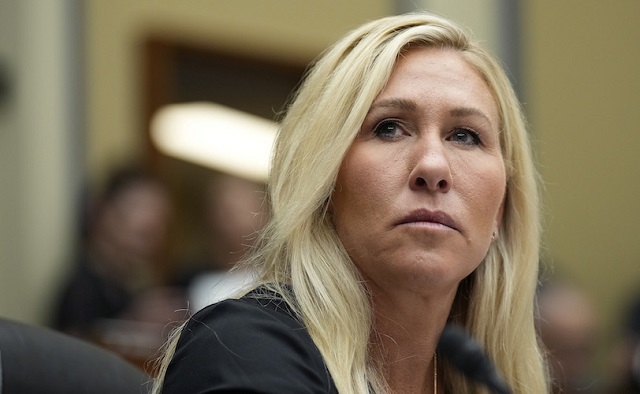
 International2 days ago
International2 days agoMarjorie Taylor Greene’s ’60 Minutes’ interview reveals power struggle between populists and RINOs
-
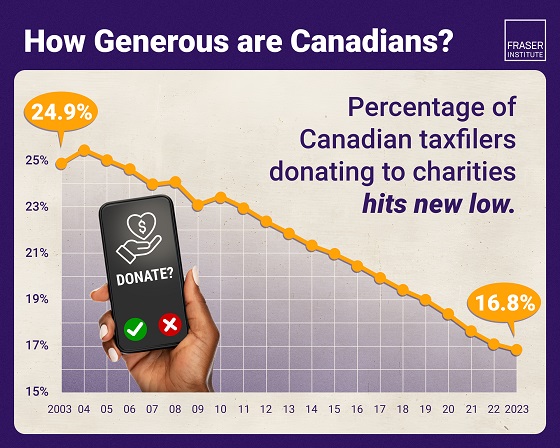
 Business1 day ago
Business1 day agoAlbertans give most on average but Canadian generosity hits lowest point in 20 years
-

 Bruce Dowbiggin1 day ago
Bruce Dowbiggin1 day agoCarney Hears A Who: Here Comes The Grinch
-

 Daily Caller2 days ago
Daily Caller2 days agoUS Supreme Court Has Chance To End Climate Lawfare
-
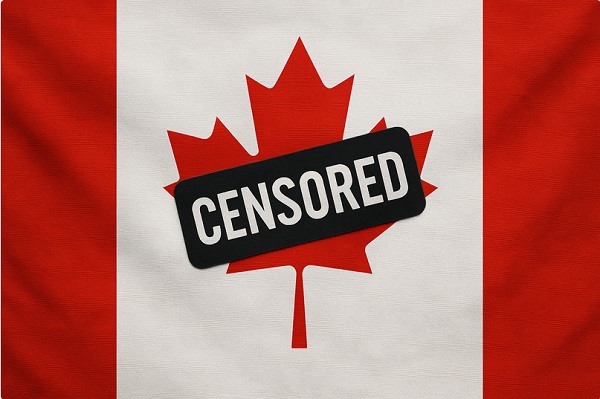
 Censorship Industrial Complex1 day ago
Censorship Industrial Complex1 day agoOttawa’s New Hate Law Goes Too Far
-

 Business1 day ago
Business1 day agoTaxpayers Federation calls on politicians to reject funding for new Ottawa Senators arena





